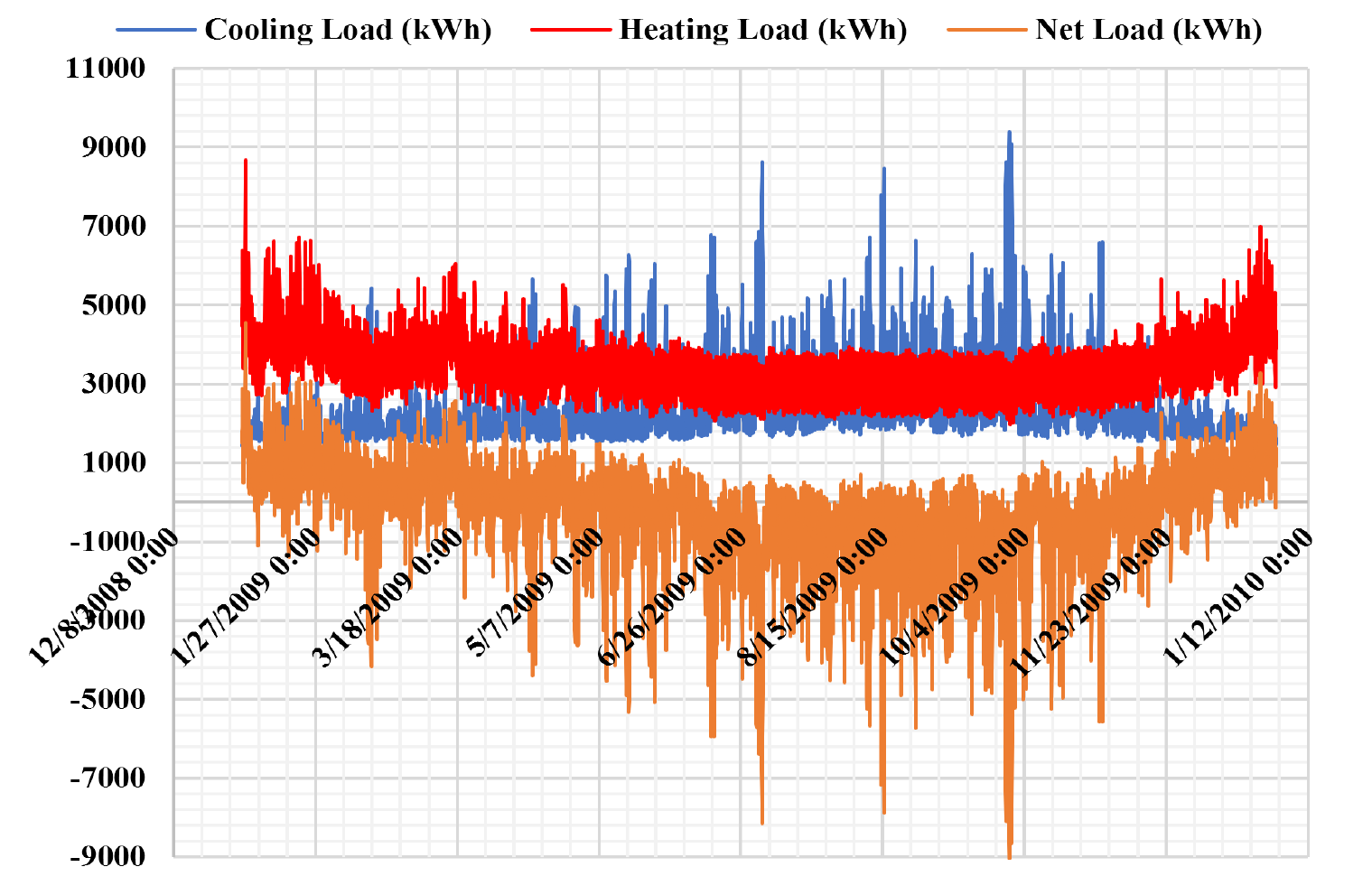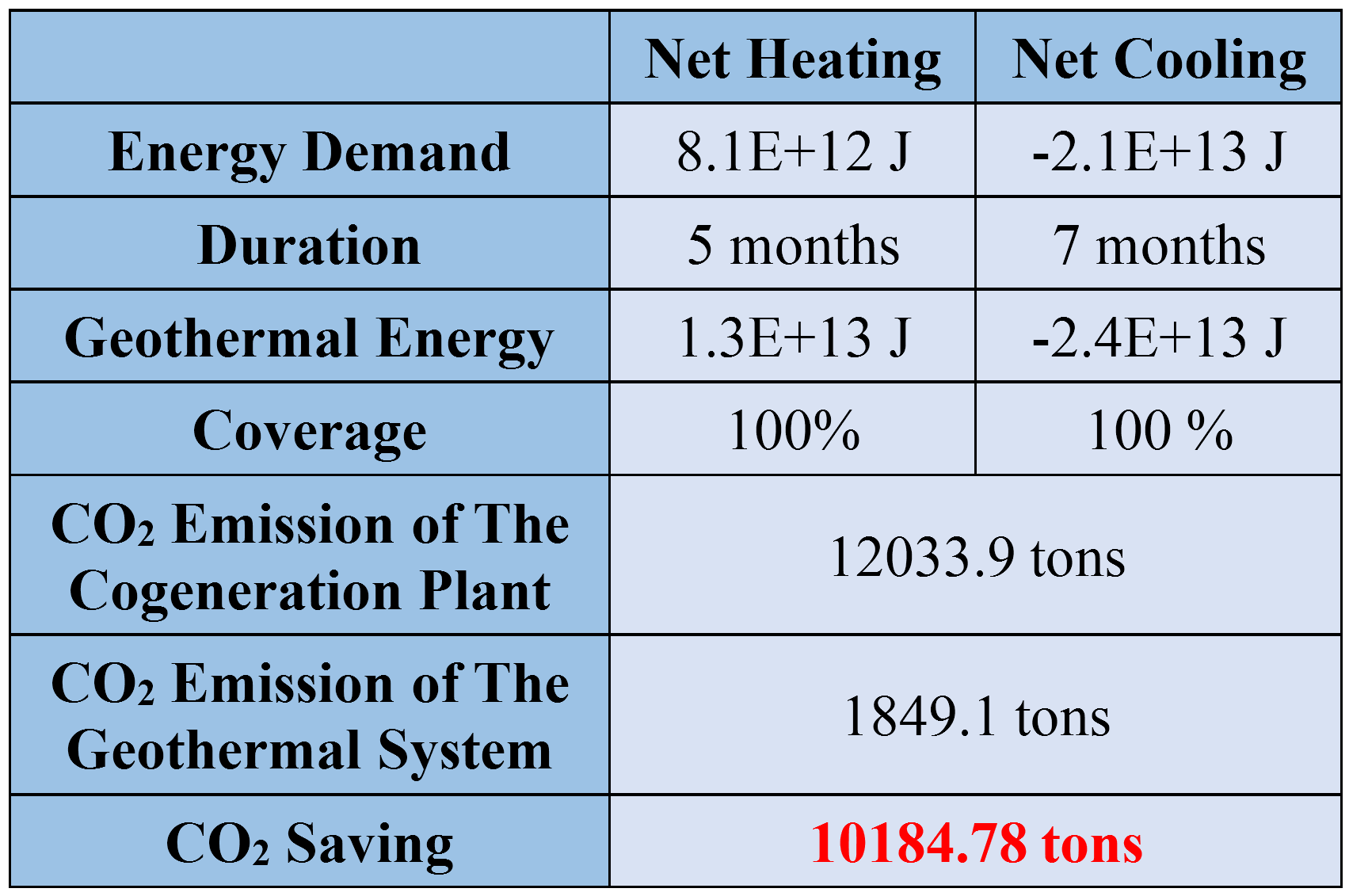FE Simulation of A Single-Borehole System
A thermal-hydraulic finite element (FE) model is built to estimate the heating and cooling energy a single geothermal borehole can provide, where the mesh is shown in Figure 1. Case studies are done in building heating and cooling conditions, considering the cool and warm seasons of Berkeley city last for 2.1 and 4.4 months, respectively. The steady-state heat fluxes of the borehole in both cases are recorded when the relative change rate is less than 0.1%, as shown in Table 2.
|
Figure 1 FE Mesh |
Table 1 Simulation Input and Output
|
Carbon Saving Estimation – A Case Study at the Business and Law Node
The campus is divided into five zones for energy delivery planning, as shown in Figure 2. A 200-geothermal boreholes system is planned in an open field in the Business and Law Node. With the steady-state heat flux, the annual geothermal potential of 200 boreholes can be evaluated, as shown in Table 2. It is found that 200 geothermal boreholes can cover 100% of the heating and cooling demand and save 10184.78 tons of CO2 emissions for the Business and Law node.
|
Figure 2 Campus Zones |
Figure 3 Annual Heating and Cooling Demand (2019) |




